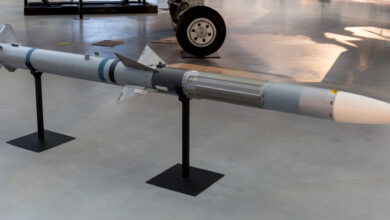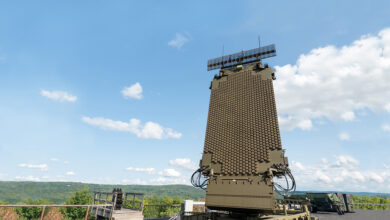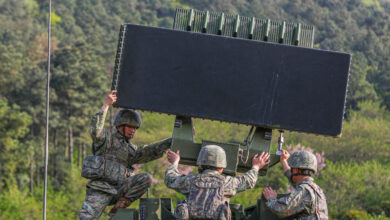
The geopolitical landscape has notably shifted in recent years, with Antarctica emerging as a new frontier for global competition. Although traditionally seen as a desolate and ice-covered continent, global powers are now vying for strategic and scientific dominance in the region.
The Antarctic Treaty System, which has maintained peace and stability for more than 60 years, is showing signs of strain as new technologies and a world increasingly consumed by Great Power competition undermine the continent’s decades-long consensus.
The actions of China and Russia have also raised concerns about the potential for militarization and fears of an emerging race for access to Antarctica’s vast resources, including fish stocks and unproven mineral and oil reserves, underscoring rising tensions on the continent. Indeed, Antarctica has 90 percent of the world’s ice and 70 percent of its fresh water.

American National Security
This evolving scenario poses significant risks to American national security and has prompted calls for a reassessment of US oversight, including our strategy and presence in the Antarctic.
In 2019, then Pacific Air Forces commander and now Chairman of the Joint Chiefs of Staff Gen. Charles Q. Brown issued a stark warning that the South Pole “is just a number of years” away from being the same kind of focal point of competition for Russia and China the Arctic is now, highlighting the urgency of this issue.
This forecast is not merely speculative; it is grounded in a series of developments and strategic moves by Beijing and Moscow that signal a clear intent to establish a more pronounced presence in the region.
Both countries are ramping up their activities on the continent through the construction of new facilities to support satellite operations, which experts fear could serve a dual purpose in times of conflict.
While these installations are ostensibly for scientific research, their capabilities extend well into the military domain, including potential applications in missile guidance and anti-satellite warfare. They could also be used to spy on, monitor, and potentially even target US and other nations’ spacecraft.
China-Russia Collaboration
Apparent collaboration between China and Russia on policy in the region is further cause for concern, with both countries working together several times in recent years to block proposed changes to the venerable Antarctic Treaty System.
This concerted effort to resist proposals with broad-based international support that would manage and protect the Antarctic environment suggests a coordinated strategy that might aim at securing unchallenged access and control over critical resources and strategic positions.
Such a united front may also indicate a shared vision for the region that diverges from the interests and values of the US and its allies, highlighting a potential axis of opposition in the southern hemisphere.

Absence of Presence
Yet despite these growing challenges, the United States today finds itself at a strategic disadvantage. Inadequate management by the civilian agency leading America’s Antarctica initiatives has left us lagging behind our adversaries in demonstrating leadership and commitment to the region.
Additionally, while Russia and China have both established clear policies and directions for Antarctica, only one sentence in the most recent US National Security Strategy was dedicated to the continent.
This absence of a robust American presence and lack of a coherent strategy for engagement not only cedes strategic territory to competitors but also undermines the principles of international cooperation and peaceful use that have historically characterized governance in the region.
Getting US Operations Back on Track
To counteract these trends and safeguard America’s national security interests, the Pentagon must assume the lead role in managing operations in Antarctica.
The Department of Defense has the capability and resources to get American operations back on track in the region and could support a comprehensive strategy that ensures a balanced and effective American presence.
It’s also important to note that this could be done within the confines of the Antarctic Treaty System, which allows for “the use of military personnel or equipment for scientific research or for any other peaceful purpose.”

‘Whole of Government’ Strategy
The strategic chessboard is shifting, and Antarctica will undoubtedly become the next focal point for geopolitical competition.
Addressing this challenge will require a “Whole of Government” strategy that leverages scientific leadership through the National Science Foundation, diplomatic engagement through the US State Department, and strategic foresight and logistics support by the Pentagon.
This would ensure that the United States does not cede this strategically vital territory to the ambitions of Russia and China, safeguarding not only its national interests but also the global commons by guaranteeing the continent remains a peaceful zone in accordance with the principles laid out in the Antarctic Treaty System.
![]() Vice Admiral Lou Crenshaw (Ret.) is the former Deputy Chief of Naval Operations for Resources, Requirements and Assessments.
Vice Admiral Lou Crenshaw (Ret.) is the former Deputy Chief of Naval Operations for Resources, Requirements and Assessments.
The views and opinions expressed here are those of the author and do not necessarily reflect the editorial position of The Defense Post.
The Defense Post aims to publish a wide range of high-quality opinion and analysis from a diverse array of people – do you want to send us yours? Click here to submit an op-ed.











